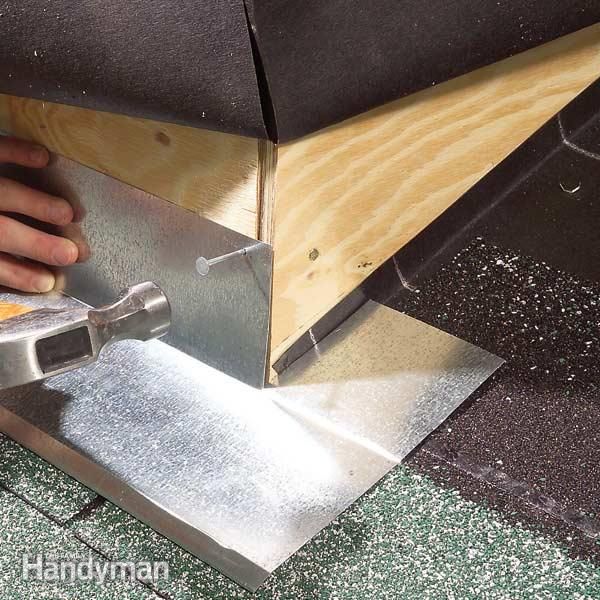Where Does Flashing Go In A Roof

Drip edge metal valley flashing dormer chimney and kickout flashing are types of roof flashing that shed water away from the connections between roofs walls chimneys and other building assemblies.
Where does flashing go in a roof. Open valleys have metal flashing to protect this critical area of the roof. While some skylight manufacturers include flashing in their products sometimes roofing professionals have to create it or purchase it separately. Installing laced shingles in a roof valley when shingle manufacturer does not approve of. As seen in m.
The gibraltar building products l flashing protects your home the gibraltar building products l flashing protects your home from moisture infiltration where your wall meets your roof. Does the drip edge metal go under the tarpaper ice and water shield or underlayment on the eave. Failure to extend the entire width of the metal valley flashing beyond the eave of the roof. L shaped flashing is a versatile general use flashing used where a uniform or strengthened finish is needed on a 90 surface.
Installing corrosive type metal flashing in valley. Understanding the proper way to install the drip edge will only get you so far. Roof flashing is commonly used around chimneys fan vents plumbing vent stacks and other items that project out of residential roofs. The flashing shall be a minimum of 4 inches 102 mm high and 4 inches 102 mm wide.
Get the real story about drip edge placement. Installing a closed valley a k a. Step flashing steps up a roof to protect where the roof meets the side walls of dormers chimneys and some skylights. Same type of flashing here but these guys went with 1 additional course of shingles which is still wrong.
But over the underlayment along the rake edges of the roof. Does drip edge go over or under felt. Flashing against a vertical sidewall shall be by the step flashing method. Each section is worked into a.
If the flashing has been installed correctly gravity will work with the flashing material to shed the water onto the regular roofing materials where it is then directed harmlessly to the ground. The edge of the roof has thin metal flashing that helps water drip off the roof without damaging the home or causing a leak. According to most building codes and manufacturer recommendations the drip edge should be installed beneath the underlayment along the eaves of the roof. It consists of a series of right angled metal pieces.














































